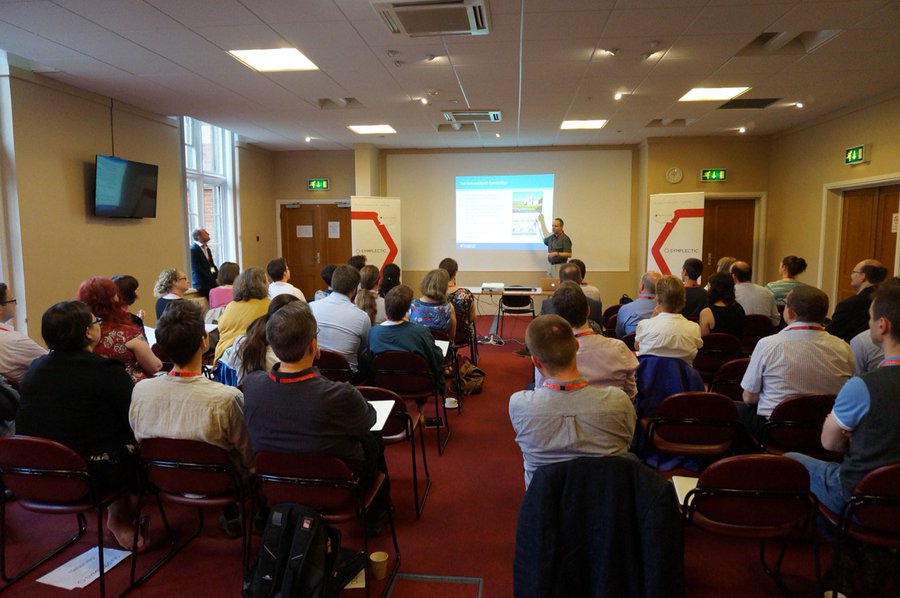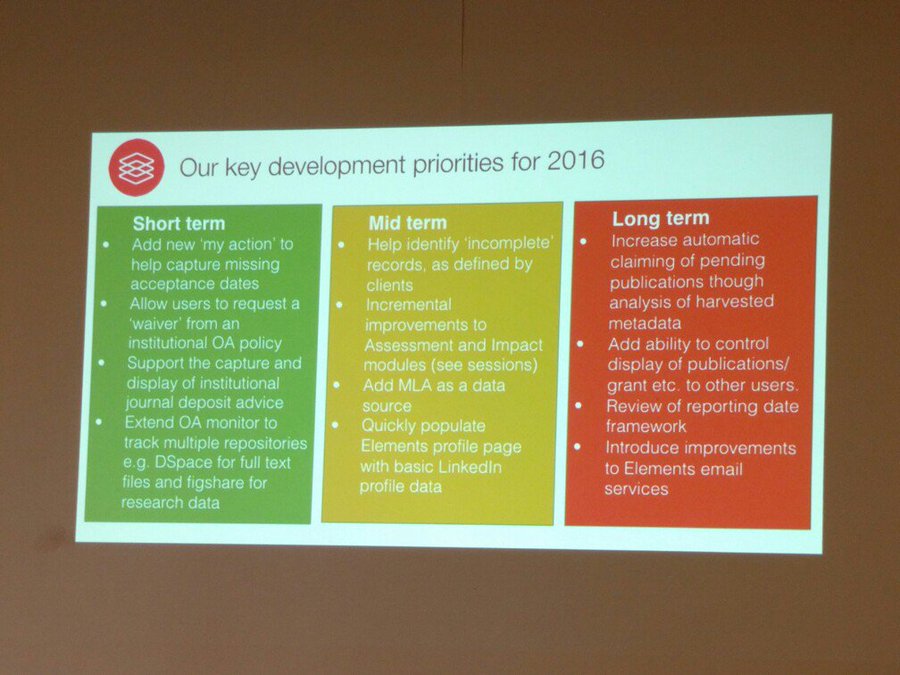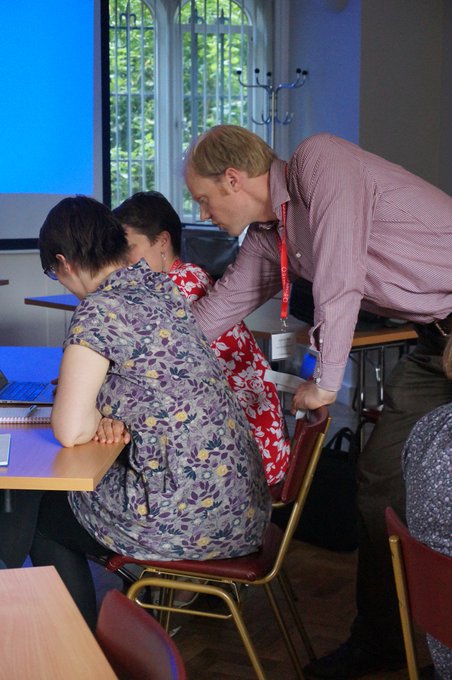Last week, team Symplectic travelled to the picturesque Selwyn College, part of the University of Cambridge, to bring together members of our user community for our UK User Conference. Over the course of two days, we hosted interactive workshops, talked about new and upcoming features, and heard stories from institutions around the country about their experiences with Elements.
Day One
Starting things off on the Thursday morning, we heard an update from CEO Jonathan Breeze on the company’s current state and recent successes, including the major improvements brought by Elements v5.0 (which 28% of our current clients have already updated to), the overhaul of our support site, the success of the Open Access Monitor (which over 80% of our UK clients are making use of), and our current development priorities and upcoming additions.
Juergen Wastl, Head of Research Information at the University of Cambridge, then told us Cambridge’s Symplectic story and potential futures, with Research Information Analyst Owen Roberson joining to show us a brilliant visualisation generated from network analysis within the university’s Elements system, illuminating the connections between researchers. You can see the slides below:
Next, more user stories. Firstly, the University of Liverpool’s recent Elements implementation, which surprised even some of us, given just how effectively it was performed. After the implementation team and the university staff worked together to get things moving, with an assertive engagement campaign within the university, take-up across departments was very encouraging. Some particularly memorable Elements feedback raised a smile:
We also heard stories about how the Open Access Monitor is being used at Liverpool John Moores University to help HEFCE policy compliance (read more about this in a Q&A we did a few months back), and about how OA engagement is approached at Imperial College London, and what the highlights and challenges of this have been so far.

SELWYN COLLEGE LUNCH HALL
After lunch (in a hall reminiscent of a certain school of wizardry), we had some ‘lightning’ demonstrations from the Symplectic team, including automatic publication claiming within Elements, custom responsive design of VIVO instances built on Bootstrap, and capturing of richer journal data within Elements. Finally, an introduction to the Assessment Module, with a case study from Dave Jones, REF Operations Manager at the University of Sheffield, about how they’re using it to prepare for the next REF.
Splitting for workshops on the Assessment and Impact Modules, the day then was brought to a close, in the comfort of a campus bar, in which we found rest, relaxation, and pizza.
Day Two
Day two was a little shorter, and despite waking up to a somewhat chaotic political landscape, spirits were still high, and the sun was still shining.

SELWYN COLLEGE GARDENS
Focusing on more of a deeper dive into Elements, we first had a behind-the-scenes look into Symplectic’s support services, headed up by Geirmund, with guest appearances by our Client Support Managers Jeff (North America) and Leonie (Asia-Pacific), showing us what it’s like to run a global support service covering multiple time zones. Keep an eye on the blog for more support stories soon.
We learnt about the past, present and future of Elements’ Repository Tools – including a demo of new features and discussion of how we can best shape its future for the community’s needs.
Then, a community engagement session in which we discussed experiences using the Open Access Monitor so far. We then ended the day with workshops on Assessment Module and Repository Tools.
We’d like to thank everyone for attending and taking part with such enthusiasm. As always, it’s essential for us to work directly with our user community to understand how we can serve them most effectively. It was useful, and very enjoyable, to meet users from all over the UK’s research community, and we look forward to doing it again soon.
Next up for Team Symplectic is our North American Conference in September. We’ll be releasing more information about this very soon. Stay tuned!

SELWYN COLLEGE









